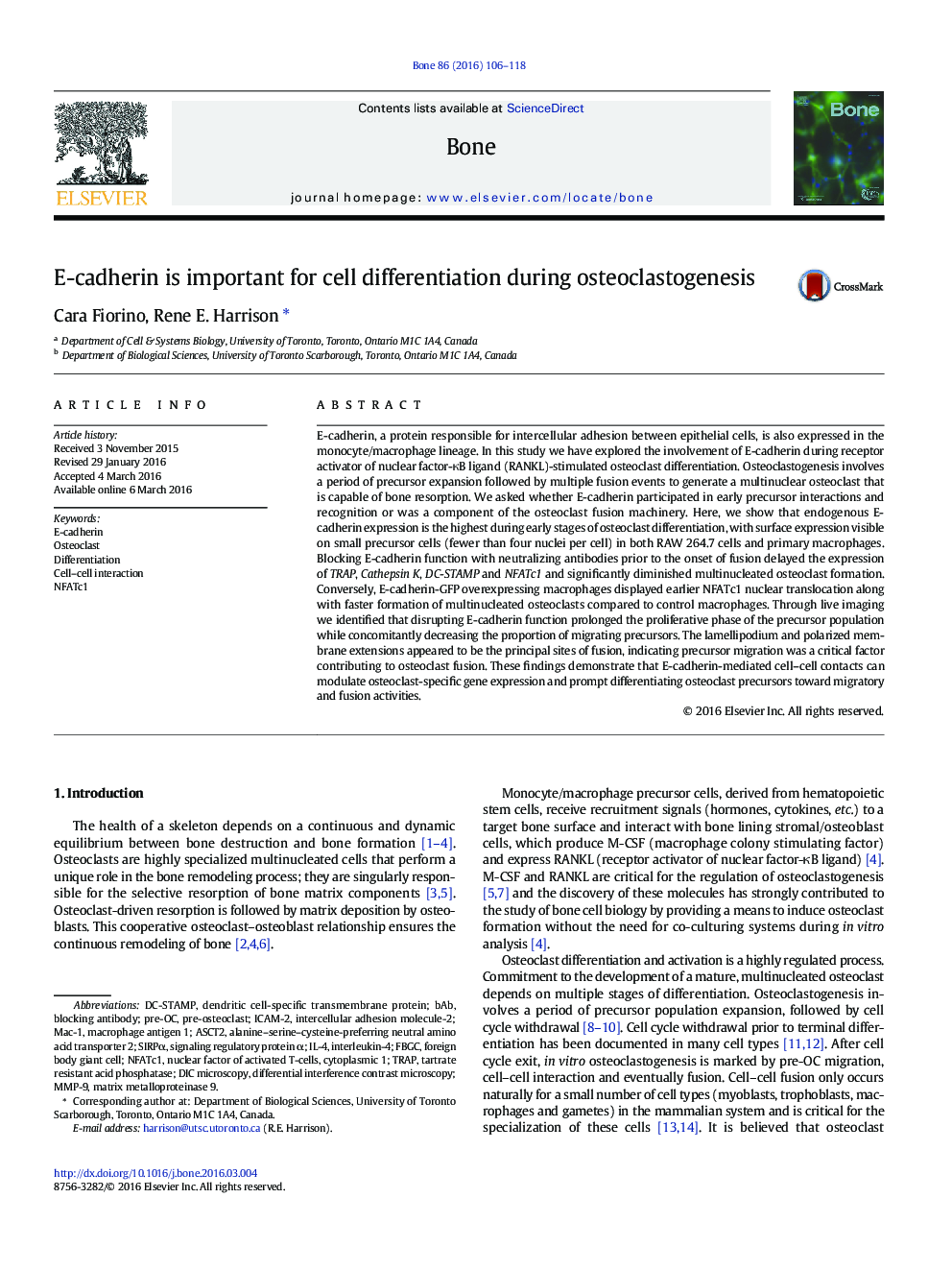| کد مقاله | کد نشریه | سال انتشار | مقاله انگلیسی | نسخه تمام متن |
|---|---|---|---|---|
| 5889072 | 1568133 | 2016 | 13 صفحه PDF | دانلود رایگان |
عنوان انگلیسی مقاله ISI
E-cadherin is important for cell differentiation during osteoclastogenesis
دانلود مقاله + سفارش ترجمه
دانلود مقاله ISI انگلیسی
رایگان برای ایرانیان
کلمات کلیدی
SIRPαnuclear factor of activated T-cells, cytoplasmic 1ICAM-2FBGCDIC microscopyASCT2DC-STAMPNFATc1TRAPMMP-9IL-4E-cadherin - E-CadherinOsteoclast - استخوانکاه، استئوکلاستTartrate resistant acid phosphatase - اسید فسفاتاز مقاوم در برابر تتراتinterleukin-4 - اینترلوکین -4Cell–cell interaction - تعامل سلول-سلولDifferentiation - تفکیکForeign body giant cell - سلول غول پیکر خارجیBAB - فصلMatrix metalloproteinase 9 - ماتریکس متالوپروتئیناز 9Blocking antibody - مسدود کردن آنتی بادیMac-1 - مک 1Differential interference contrast microscopy - میکروسکوپ تضاد تداخل دیفرانسیلdendritic cell-specific transmembrane protein - پروتئین پروتئین غشایی خاص سلول دندریتیک
موضوعات مرتبط
علوم زیستی و بیوفناوری
بیوشیمی، ژنتیک و زیست شناسی مولکولی
زیست شناسی تکاملی
پیش نمایش صفحه اول مقاله

چکیده انگلیسی
E-cadherin, a protein responsible for intercellular adhesion between epithelial cells, is also expressed in the monocyte/macrophage lineage. In this study we have explored the involvement of E-cadherin during receptor activator of nuclear factor-κB ligand (RANKL)-stimulated osteoclast differentiation. Osteoclastogenesis involves a period of precursor expansion followed by multiple fusion events to generate a multinuclear osteoclast that is capable of bone resorption. We asked whether E-cadherin participated in early precursor interactions and recognition or was a component of the osteoclast fusion machinery. Here, we show that endogenous E-cadherin expression is the highest during early stages of osteoclast differentiation, with surface expression visible on small precursor cells (fewer than four nuclei per cell) in both RAW 264.7 cells and primary macrophages. Blocking E-cadherin function with neutralizing antibodies prior to the onset of fusion delayed the expression of TRAP, Cathepsin K, DC-STAMP and NFATc1 and significantly diminished multinucleated osteoclast formation. Conversely, E-cadherin-GFP overexpressing macrophages displayed earlier NFATc1 nuclear translocation along with faster formation of multinucleated osteoclasts compared to control macrophages. Through live imaging we identified that disrupting E-cadherin function prolonged the proliferative phase of the precursor population while concomitantly decreasing the proportion of migrating precursors. The lamellipodium and polarized membrane extensions appeared to be the principal sites of fusion, indicating precursor migration was a critical factor contributing to osteoclast fusion. These findings demonstrate that E-cadherin-mediated cell-cell contacts can modulate osteoclast-specific gene expression and prompt differentiating osteoclast precursors toward migratory and fusion activities.
ناشر
Database: Elsevier - ScienceDirect (ساینس دایرکت)
Journal: Bone - Volume 86, May 2016, Pages 106-118
Journal: Bone - Volume 86, May 2016, Pages 106-118
نویسندگان
Cara Fiorino, Rene E. Harrison,